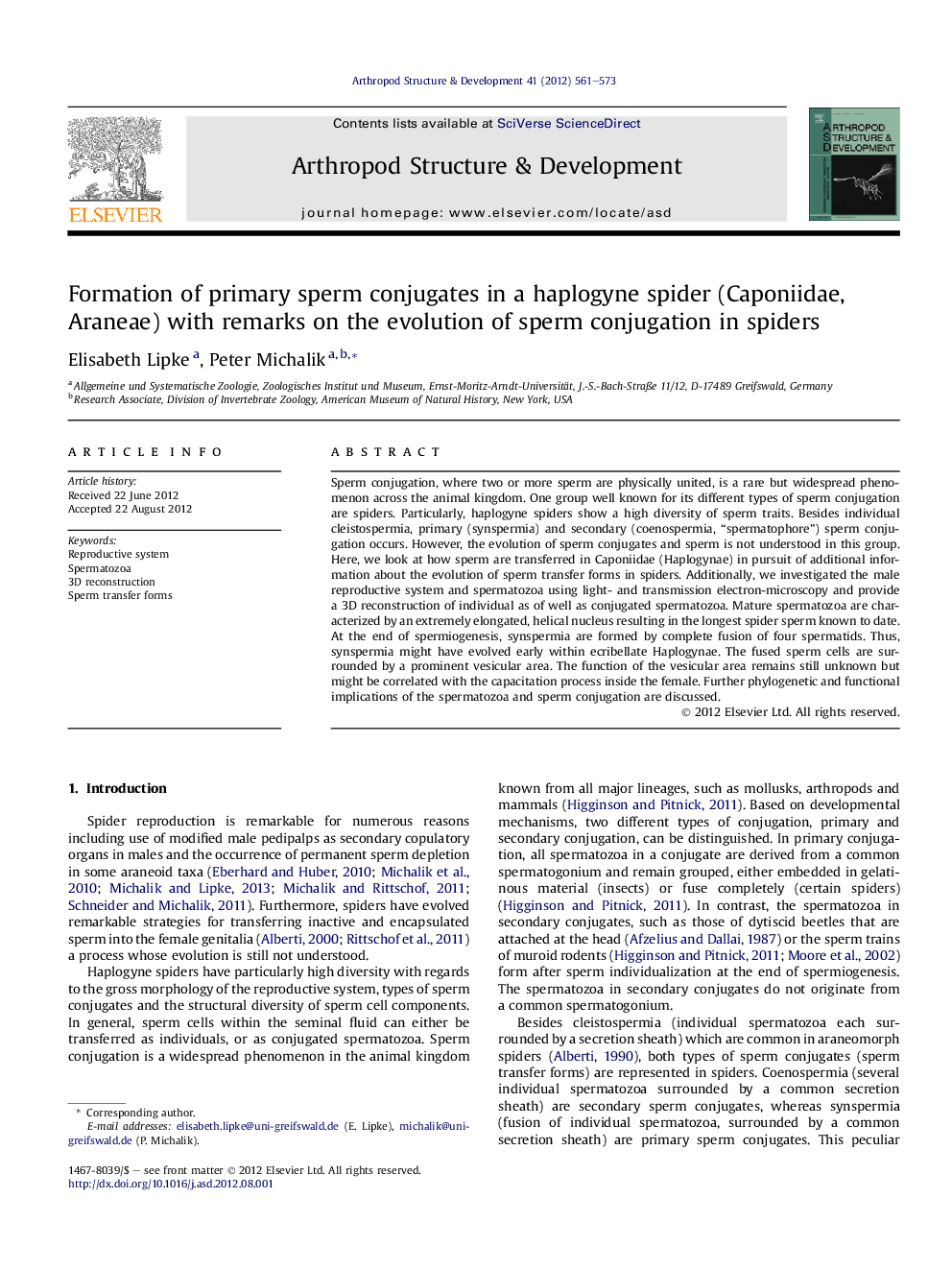| Article ID | Journal | Published Year | Pages | File Type |
|---|---|---|---|---|
| 2778647 | Arthropod Structure & Development | 2012 | 13 Pages |
Sperm conjugation, where two or more sperm are physically united, is a rare but widespread pheno-menon across the animal kingdom. One group well known for its different types of sperm conjugation are spiders. Particularly, haplogyne spiders show a high diversity of sperm traits. Besides individual cleistospermia, primary (synspermia) and secondary (coenospermia, “spermatophore”) sperm conjugation occurs. However, the evolution of sperm conjugates and sperm is not understood in this group. Here, we look at how sperm are transferred in Caponiidae (Haplogynae) in pursuit of additional information about the evolution of sperm transfer forms in spiders. Additionally, we investigated the male reproductive system and spermatozoa using light- and transmission electron-microscopy and provide a 3D reconstruction of individual as of well as conjugated spermatozoa. Mature spermatozoa are characterized by an extremely elongated, helical nucleus resulting in the longest spider sperm known to date. At the end of spermiogenesis, synspermia are formed by complete fusion of four spermatids. Thus, synspermia might have evolved early within ecribellate Haplogynae. The fused sperm cells are surrounded by a prominent vesicular area. The function of the vesicular area remains still unknown but might be correlated with the capacitation process inside the female. Further phylogenetic and functional implications of the spermatozoa and sperm conjugation are discussed.
► First 3D reconstruction of complex sperm and sperm conjugates in chelicerates. ► Sperm of studied species indicate enormous sperm size differences across spiders. ► Synspermia in Caponiidae suggest an early evolution of this type within Haplogynae.
